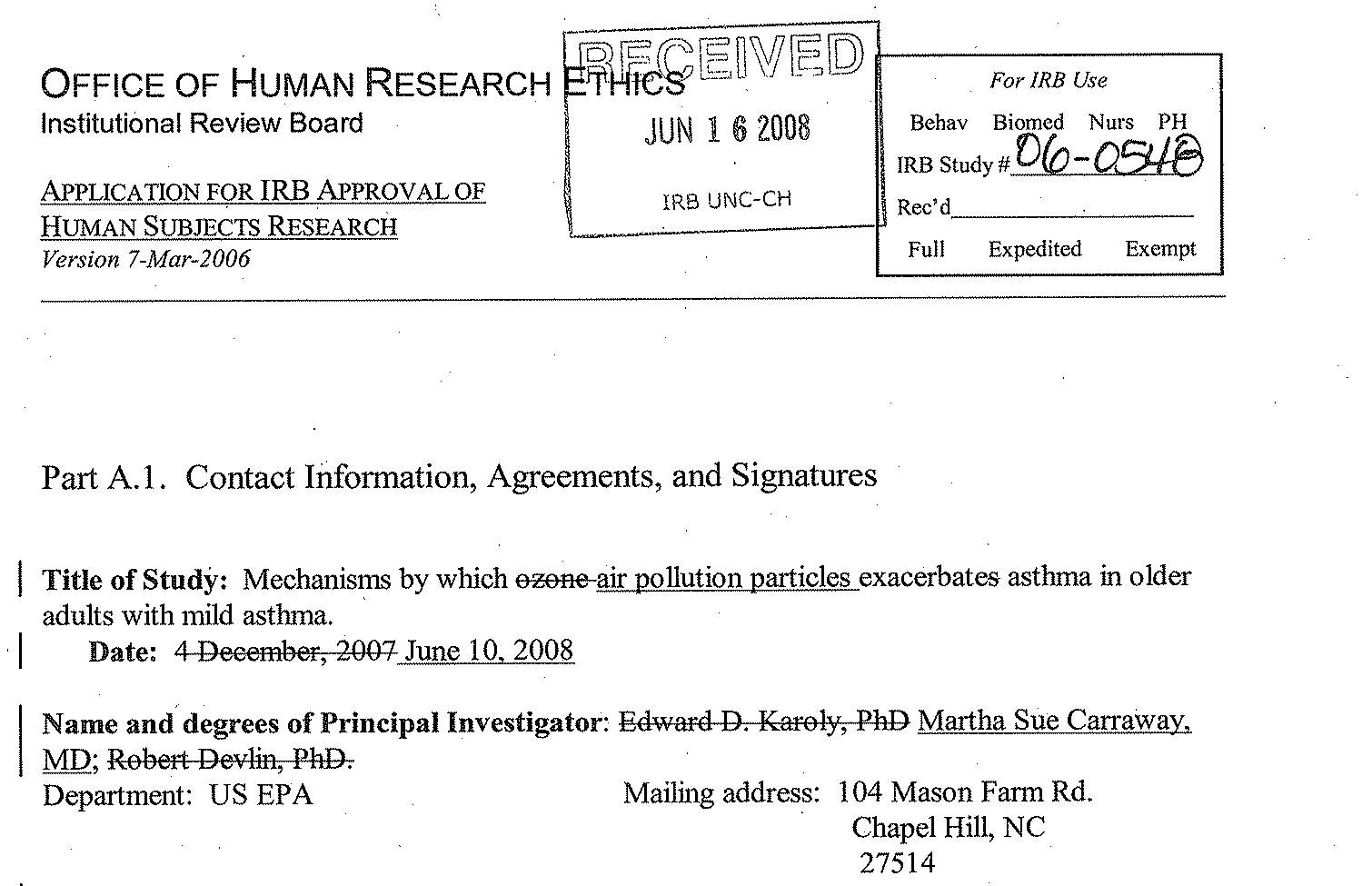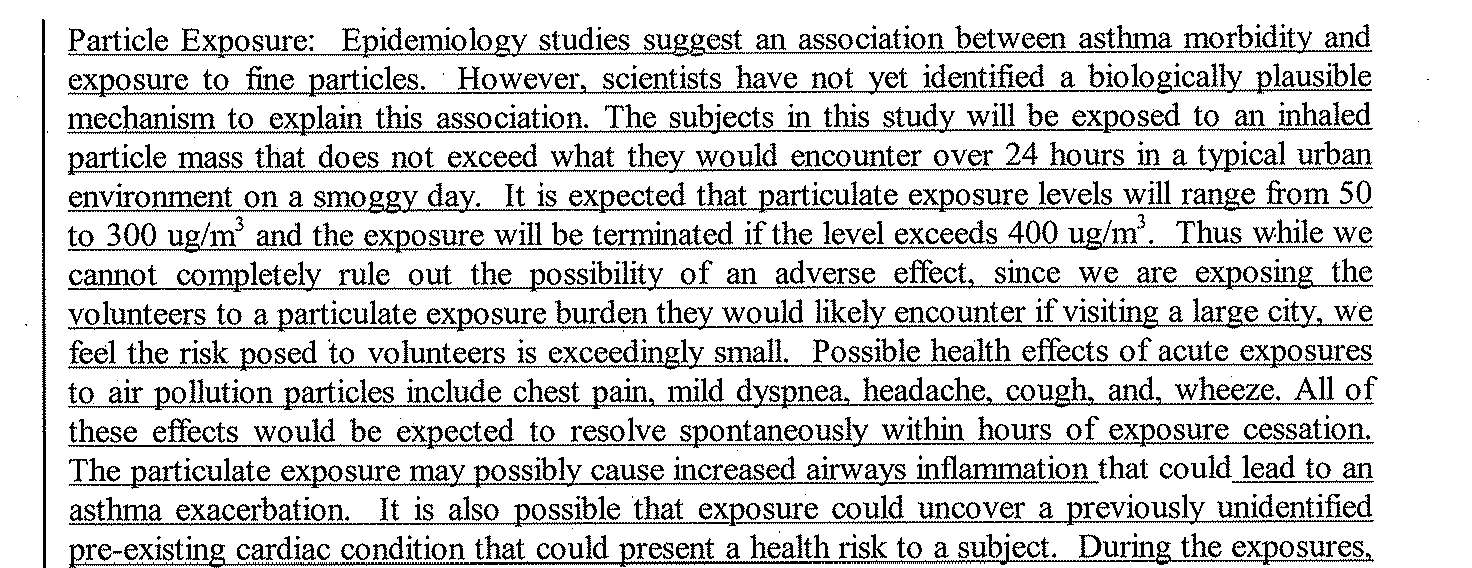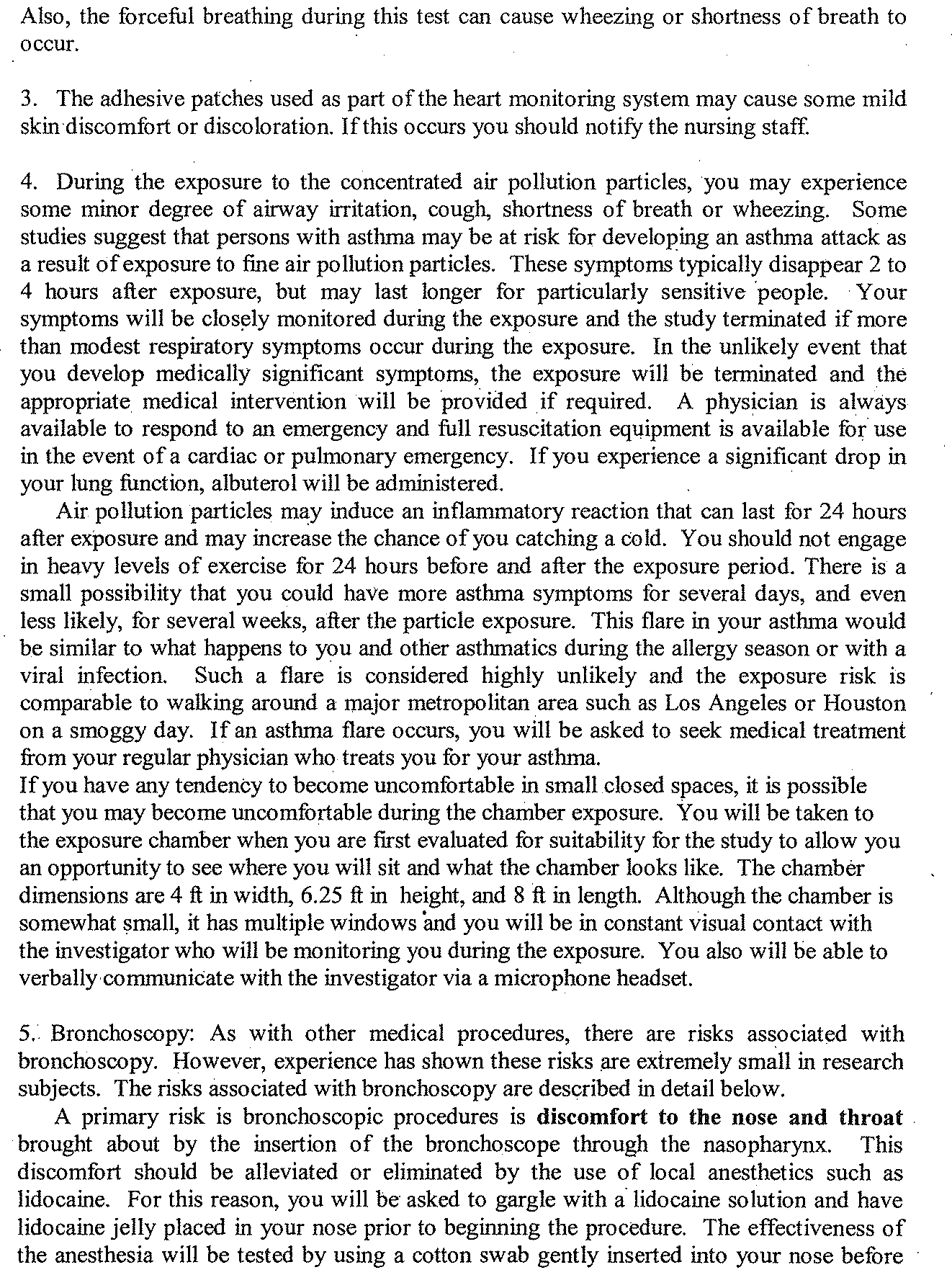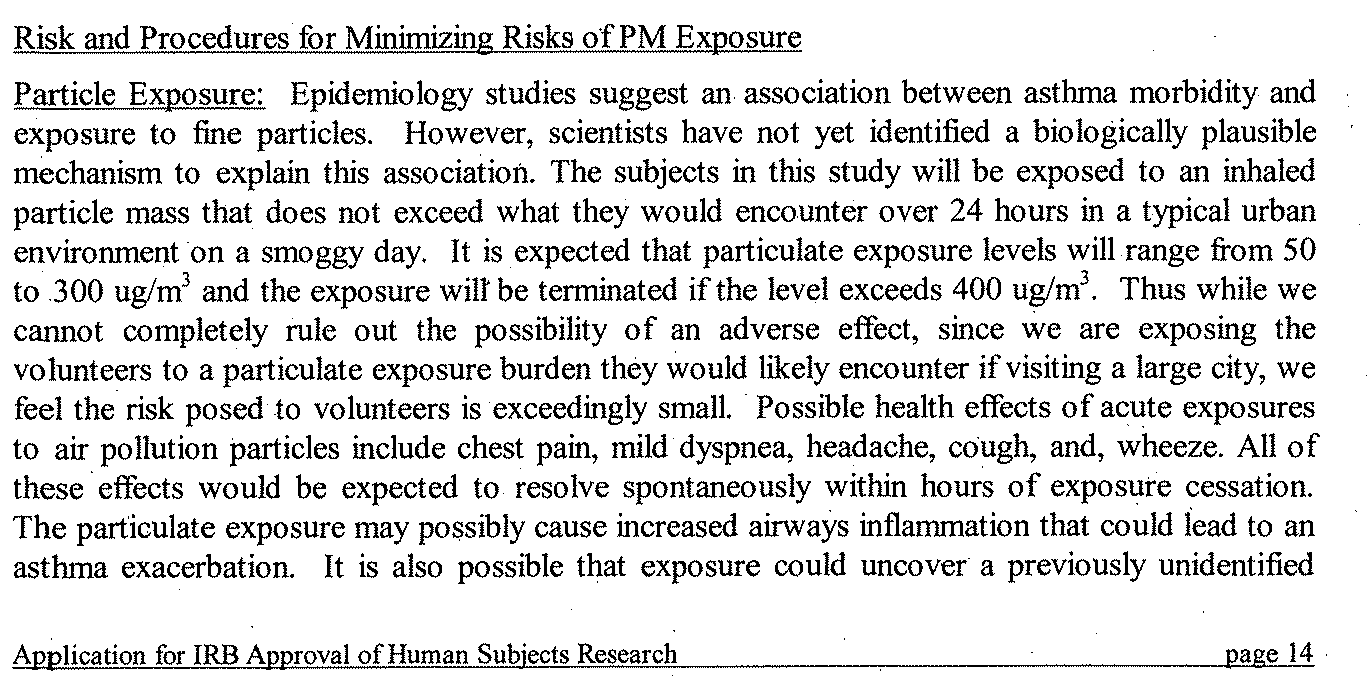So far we’ve seen how EPA tested PM2.5 on adults who were elderly and/or had metabolic syndrome, and we’ve seen how EPA tested diesel exhaust on adults who were elderly and/or had metabolic syndrome. Now, we will move on to EPA testing PM2.5 on adults with asthma.
Starting in late-2006 the EPA began testing the effects of ozone on adult asthmatics. By June 2008, this morphed into testing PM2.5 on adult asthmatics.
It apparently was literally just a matter of swapping out ozone for PM2.5.
As usual, study subjects were to be exposed to very high levels of PM2.5, much higher than they would normally inhale in the Chapel Hill, NC-area — of course, not that any level of PM2.5 is safe, according to the EPA.
Despite what EPA tells the public about PM<sub2.6, it told the UNC IRB and ultimately the study subjects that:
As usual, the study subjects were not intended to benefit from the experienced of being poisoned by EPA (except for the standard $12/hour fee plus expenses):
Check out this risk disclosure by EPA to the study subjects — not only does the PM2.5 risk get listed fourth, but the risk of dying is omitted and even the risk of asthma flare-up is minimized.
EPA also fails to inform the UNC IRB of the deadly risk that is inhalation of PM2.5:
This study is aptly titled “KINGCON”:
Check out this IRB-approved recruitment script in which EPA discloses that it wants to ultimately compare the elderly guinea pigs against younger guinea pigs:
But don’t think that the UNC IRB went to any great length to check expert opinion on the risks of PM2.5:
Really, UNC? That is due diligence? One guy… the only one you know?
You can check out Yankaskas’ background for yourself…. he doesn’t seem to us to be any sort of any expert on PM2.5.










